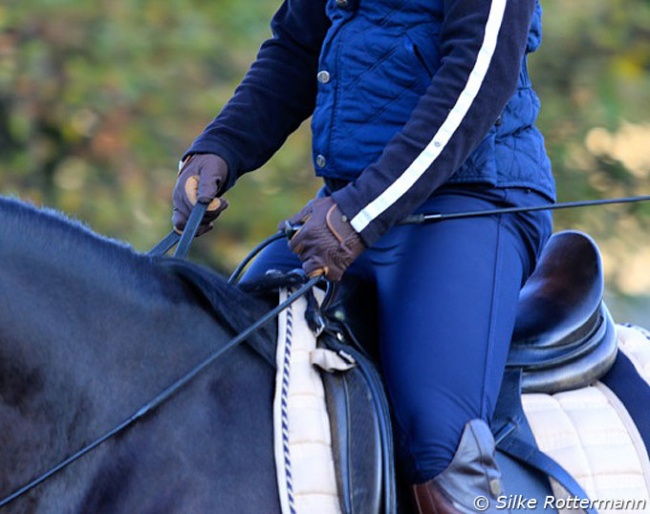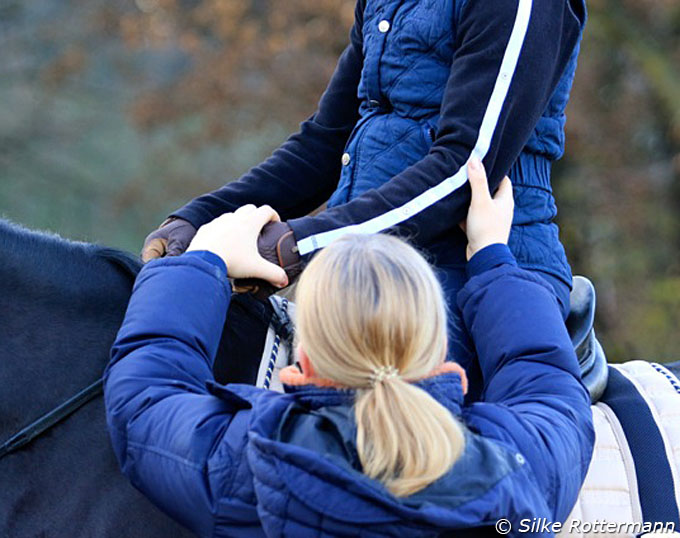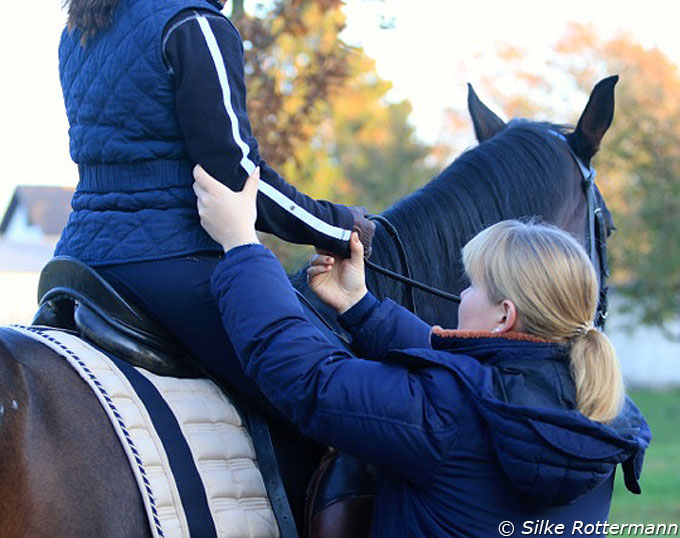
Fine motor skills allow us to be precise and coordinated with our hands. Coordination in turn makes our movements fluent and helps our body awareness. For rider this skill is very useful because it allows us to feel the smallest changes in the contact and therefore enables us to communicate with the horse in a soft and precise way.
Coordination of our hands is very good because of its large representation on our brain motor cortex. We are naturally good in using hands in our daily life and for this reason it is also logical to take benefit of this ability as a rider.
Good Hands Come from a Good Seat
Proper use of the hands is only possible when the position of the rider is correct. The classical seat allows the correct use of the whole body. For a relaxed and sensitive hand, the shoulder girdle needs to function correctly, the arms rest at the rider's sides and there is the classical line from elbow to the bit in horse’s mouth. This also helps the rider to use the scapula and shoulder region correctly. The hand and the arm are an important link to the core because of fascial lines, and different structural connections in the body. Tension in one area leads to compensations elsewhere, affecting both horse and the rider. If there is a problem with the seat, there usually is something to correct in how the rider is using the hand.
The position of the wrist is very important, because even slightest tension on that area creates a lot of difference in the quality of the rein contact. The wrist is built to allow movement to different directions, but only the neutral middle position allows the wrist to let the rider sense the contact and use the hand in an optimal way.

a relaxed arm and softer contact
The fingers need to remain relaxed, and the fist slightly open, with the thumb resting on the rein. The fist should not remain tightly closed, because this takes off the sensitivity and functions of the hand. Too open fingers is not good either. Some riders tend to let the reins slide between the fingers when trying to be soft, but this habit needs some practice.
The thumb that rests on the rein will help the rider to keep the optimal length of the rein, and it can easily be adjusted by using the thumb. It is also a safety issue to have the thumb on the rein, because if the horse would suddenly pull the reins because of flight reaction, the rider’s hand will close as a reflex and there is still a good grip on the reins. If the thumb is not on the rein, there is a risk that in a sudden situation the rein will glide through the hand and it gets more difficult to control the situation.
How to Get a Soft Grip
There is a difference on how the soft grip is created. If you think of holding a pencil for writing, your fingers will remain soft, the wrist is straight and you can use the hand in an optimal way. This feeling is very useful while riding and it allows the rider to communicate with the horses mouth softly, encouraging the horse to remain relaxed when needed.

To feel the difference between these grips, try this:
1. Take a pencil, and write your name or draw a horse as you would usually do it.
2. Do the same again pushing your thumb against your index finger to create a tight grip.
3. Hold the pen inside your hand and have a “proper” grip around it. The text will be totally different, and a lot of precision is lost.
by Niina Kirjorinne - Photos © Silke Rottermann
Related Links
Functionality in Equitation: No Horse is Born with a Bad Mouth
Functionality in Equitation: Resetting the Leg Aids
Functionality in Equitation: Skin Damage from Leg Aids
Functionality in Equitation: The Forward Thinking Hand